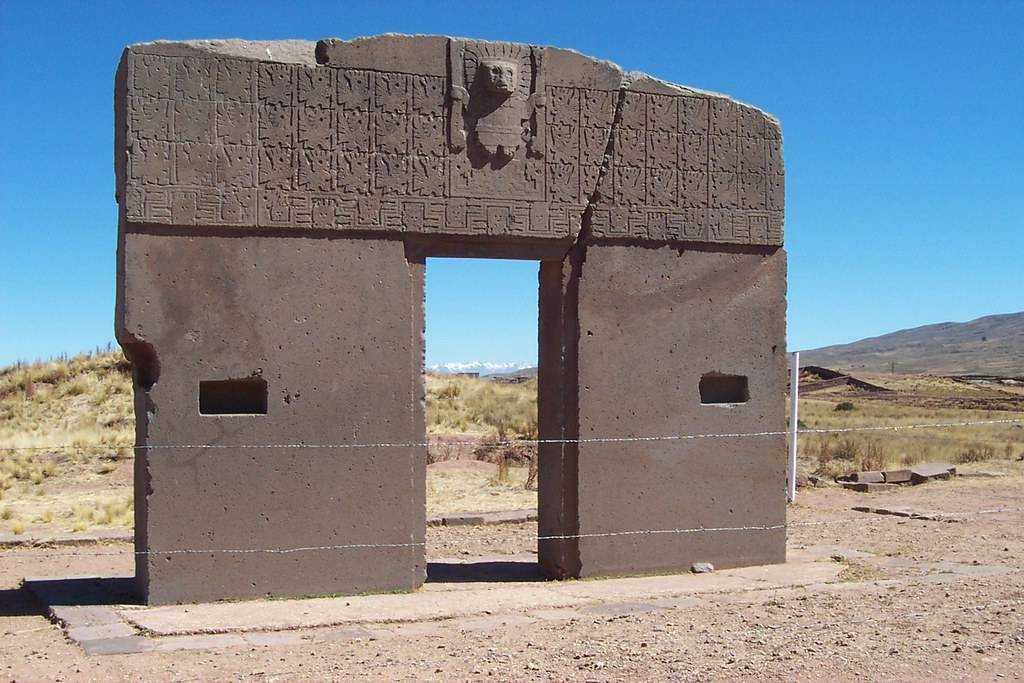Summary
Discovering Tiwanaku: A Cradle of Andean Culture
Nestled in the highlands of Bolivia lies the fascinating and mysterious site of Tiwanaku. This ancient city is a testament to a civilization that thrived long before the rise of the Inca Empire. Visitors to Tiwanaku are greeted with impressive stone structures and intricate carvings that hint at the site’s cultural and religious significance. Archaeologists believe Tiwanaku was a spiritual and political center, drawing in people from across the region for ceremonial events. Despite centuries of weathering, the remnants of temples like the Akapana Pyramid and the Kalasasaya still offer a glimpse into the past. These structures, along with the famous Gate of the Sun, are key to understanding the Tiwanaku people’s advanced understanding of astronomy, which played a vital role in their agriculture and theology.
Get your dose of History via Email
Architectural Marvels of Tiwanaku
The craftsmanship of the Tiwanaku builders is evident in the precision-cut stones that form the city’s core. The use of metal clamps to join the stones illustrates their innovative building techniques. The semi-subterranean Temple, with its carved stone heads, is particularly striking, showcasing the artistic skills of the Tiwanaku culture. Researchers have marveled at the transportation of the massive stones used in construction, some originating from quarries many miles away. This suggests the existence of a sophisticated and organized society capable of such complex engineering feats. The architecture of Tiwanaku stands as an enduring legacy of a civilization that once dominated the Andean region, reflecting their understanding of geometry and urban planning.
The Enigma of Tiwanaku’s Decline
Despite its once great influence, the decline of Tiwanaku remains shrouded in mystery. Around 1000 AD, the city began to fade from prominence, leading scholars to speculate on the factors that caused this. Climate change and resulting agricultural failures are commonly cited as potential causes for the downturn. Additionally, the breakdown of trade networks that once supported the city’s economy could have contributed to its fall. The impact of Tiwanaku’s loss was felt throughout the Andes, as evidenced by the cultural void that it left behind. Its legacy, however, continues to captivate both scholars and tourists, who are drawn to its enduring mysteries and the ingenuity of its people.
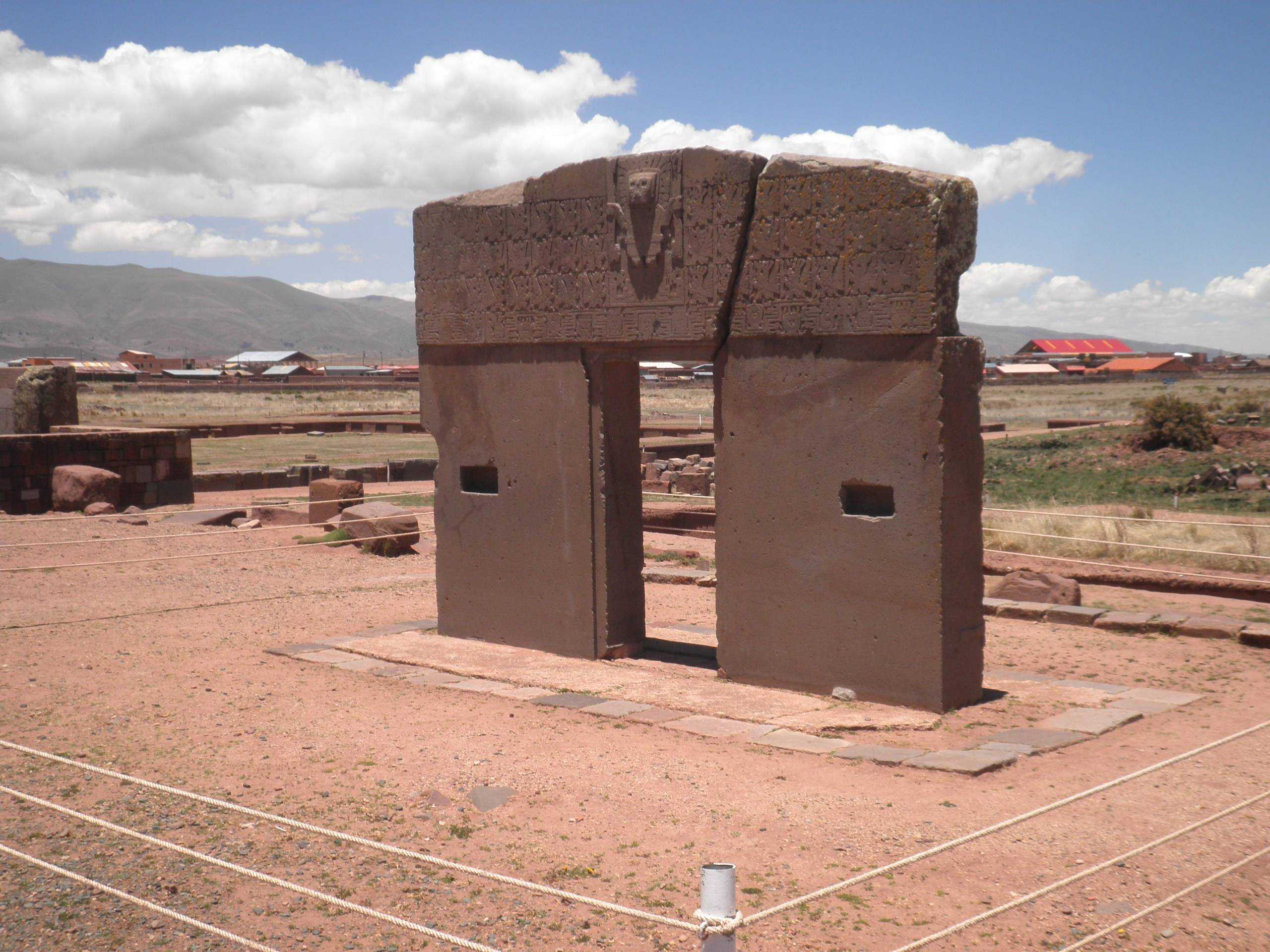
Historical Background of Tiwanaku
The Dawn of Tiwanaku Civilization
Delving into the heart of the Andean plateau, Tiwanaku emerges as a significant pre-Columbian archaeological site. This civilization, which peaked between 500 to 1000 AD, laid the foundations of Andean culture. Tiwanaku’s roots reach back to around 1500 BC, starting as a small village and growing into a mighty city-state. The society here thrived on the southern shore of Lake Titicaca, Bolivia. The region’s rich resources and strategic location fostered its rise. Tiwanaku became a hub of trade and cultural exchange, influencing regions far beyond its boundaries. Its impact on art, architecture, and civil engineering was profound and enduring.
The Height of Tiwanaku’s Influence
At its zenith, Tiwanaku’s influence extended across the Andean highlands. Its reach is evident in the spread of its distinct artistic and architectural styles. What is more, the people of Tiwanaku excelled in agriculture, mastering raised field technology that allowed them to farm efficiently in the high-altitude climate. Their command of irrigation and the cultivation of staple crops such as potatoes and quinoa supported a dense population. The city’s population might have reached around 50,000 at its peak, a testament to their successful adaptation to the harsh Andean environment.
The Sociopolitical Structure of Tiwanaku
Power in Tiwanaku society likely resided with a religious elite. The city’s layout, with grandiose temples and ritual spaces, points to a theocratic governance model. Central to their religious practice was the worship of ancestral deities and a creator god, often symbolized by the staff-bearing figures found in Tiwanaku iconography. The city’s elite may have also controlled the extensive trade networks, which included the exchange of goods from the Pacific coast and the Amazonian lowlands. Religious and political power thus intertwined in the hands of a few, leading to a cohesive social structure that maintained the state’s stability for centuries.
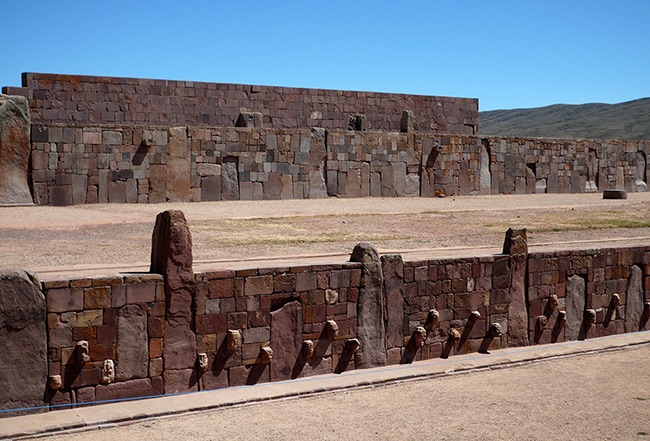
Artistic and Cultural Achievements of Tiwanaku
The legacy of Tiwanaku is especially prominent in the fields of art and culture. Innovative metalwork, ceramics, and textiles reflect a society with sophisticated tastes and talents. The iconic Gateway of the Sun is a stunning example of their stonework, with precise cuts and elaborate relief carvings. Beyond their technological mastery, Tiwanaku’s cultural practices have resonated through time, influencing the Incas and others. The city’s ruins continue to be a source of pride and national identity for the Andean peoples today.
Understanding the decline of a Powerful Civilization
The decline of Tiwanaku is as captivating as its rise. Scholars believe a combination of factors led to the civilization’s eventual fall around 1000 AD. A significant climatic event, perhaps an extended drought, likely crippled their agricultural systems. Social upheaval may have followed, compounded by the strain on the city’s economic and political structures. Yet, despite its fall, the story of Tiwanaku endures. The site remains a symbol of pre-Columbian grandeur, captivating the world with its enigmatic past and monumental achievements.
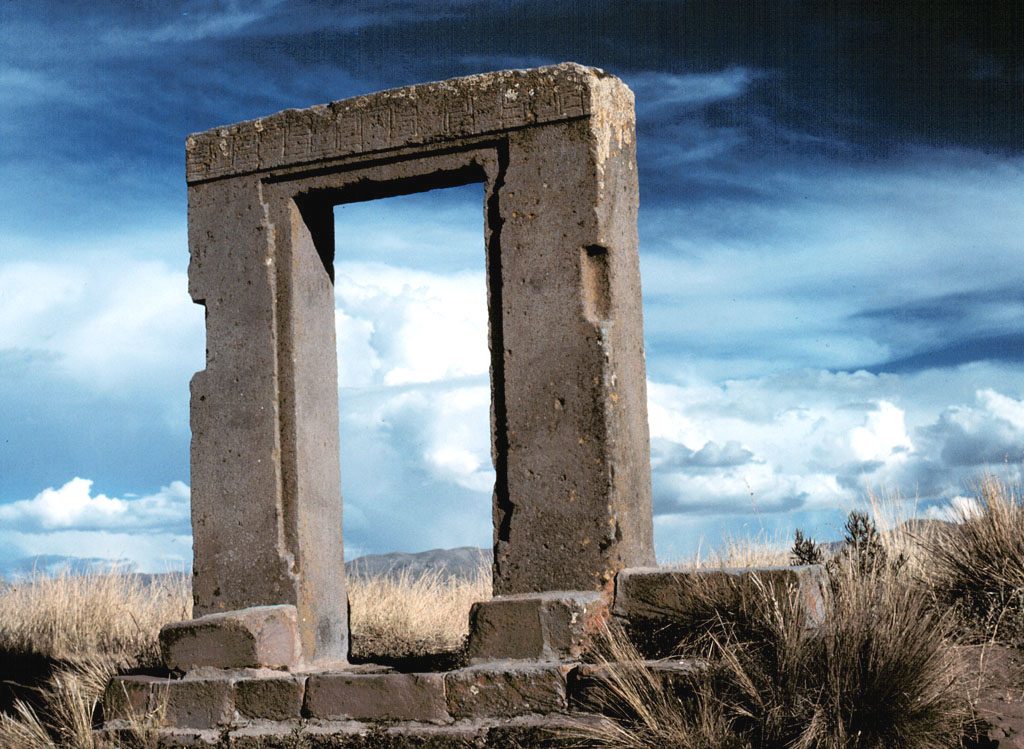
The Discovery of Tiwanaku
The discovery of Tiwanaku changed the course of South American archaeology. When European explorers first encountered the site in the 16th century, its grandeur was already buried under time. However, systematic study did not begin until the 19th century. The first maps of the site were drawn by geologist Alcides d’Orbigny in 1835, but it was not until the 1900s that detailed excavation work commenced. These first explorations hinted at Tiwanaku’s complexity and the civilization’s advancement. Researchers unearthed monumental structures and artifacts that spoke of a bygone era of prosperity and power, sparking a global interest in this ancient Andean culture.
The Role of Archaeologists in Unveiling Tiwanaku
It took the persistent efforts of archaeologists over the years to uncover Tiwanaku’s secrets. Renowned figures such as Max Uhle and Arthur Posnansky dedicated portions of their lives to studying the site extensively. They highlighted its architectural wonders and the culture’s adeptness in social organization, construction, and art. Through ongoing research, a timeline of the civilization’s evolution became clear, stretching back as far as 1500 BC. Further excavations in the mid-20th century by the likes of Carlos Ponce Sanginés added to the knowledge base, providing insights into Tiwanaku’s influence on later cultures.
The Insight from Artifacts
Artifacts from Tiwanaku are as enchanting as they are informative. The craftsmanship found in these objects has allowed historians to piece together aspects of daily life in the ancient city. Enigmatic monoliths, intricate pottery, and advanced agricultural tools speak to a sophisticated society. The discovery of the Gateway of the Sun with its complex iconography deepened our understanding of the religious practices at Tiwanaku. Each artifact unearthed adds a layer to our understanding of this trailblazing civilization.
International Collaboration in Tiwanaku’s Study
Research into Tiwanaku has been a collaborative international effort. Scientists and universities from around the world have joined Bolivian researchers to decode Tiwanaku’s past. Advanced technologies like ground-penetrating radar and satellite imagery have furthered discoveries, revealing more about the city’s layout and impact. This multinational study illustrates the universal value of Tiwanaku, linking experts across the globe in a shared pursuit of historical understanding.
Continuing Mysteries and Research
Even with centuries of study, Tiwanaku still holds many secrets. Ongoing research continues to uncover the reasons behind its dramatic fall and the lives of its inhabitants. As new methods and technologies emerge, so too does the potential for a deeper understanding of Tiwanaku. The site invites us not only to look back but also to think ahead about how the preservation of such heritage can inform our future.
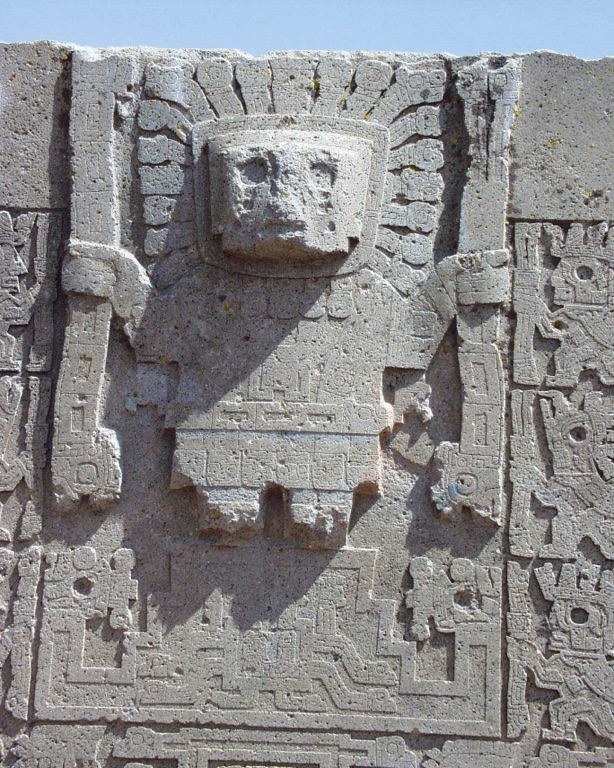
Cultural Significance, Dating methods, Theories and Interpretations
The Cultural Importance of Tiwanaku
Tiwanaku is more than a site of architectural wonder; it is a crucible of Andean culture. Its influence stretched far beyond its heartland, shaping the religious and social constructs of the region. The engineering brilliance in agriculture and urban planning echoed throughout the Andes, marking a before and after in local history. Tiwanaku also served as a cultural beacon throughout its existence. It wove together diverse groups from different ecological zones, fostering a unique, shared identity that still resonates in Bolivian culture today.
Unlocking Tiwanaku’s Timeline: Radiocarbon Dating and Beyond
Estimating Tiwanaku’s age has been a journey of scientific discovery. Radiocarbon dating is the main method researchers use to decipher the timeline. It has narrowed down the civilization’s peak to between 500 and 1000 AD. However, the exact chronology of Tiwanaku’s rise and fall still sparks debate among experts. Stratigraphy and thermoluminescence dating have also contributed clues to the site’s history. These methods help us paint a clearer picture of when Tiwanaku flourished and the timeline of its impressive constructions.
Theories on Tiwanaku’s Social Hierarchy and Power Distribution
Theories about Tiwanaku’s societal structure revolve around a centralized religious authority. Researchers propose that a priest-king or a council of priests likely wielded significant power. They infer this from the grand temples and consistent iconography. Additionally, the city’s strategic location suggests it was an epicenter for a far-reaching trade network. Such political and spiritual influence presumably allowed Tiwanaku to hold sway over a wide area, commanding respect and tribute from surrounding communities.
Interpreting the Spiritual Life of Tiwanaku
Interpretations of Tiwanaku’s spiritual life are as fascinating as the structures themselves. The recurrent imagery of staff-bearing deities suggests a pantheon of gods with specialized roles. Scholars believe that astronomical alignments of certain structures reflect a deep understanding of celestial events. These, in turn, guided religious ceremonies and agricultural cycles. Moreover, funerary practices and evidence of ritual offerings found at the site show a connection between the living, the dead, and the divine in Tiwanaku culture.
Puzzling Over Tiwanaku’s Decline
The reasons behind Tiwanaku’s decline are still subject to speculation. Some theorists point to environmental change, such as a prolonged drought, which led to agricultural decline and societal stress. Others consider internal conflict and the overextension of resources as contributing factors. Theories are constantly evolving as new evidence emerges from ongoing excavations and research efforts, keeping the mystery of Tiwanaku’s fall as compelling as its rise to power.

Conclusion and Sources
The monumental site of Tiwanaku offers a profound glimpse into pre-Columbian history, revealing a civilization that was both intricate and influential. Its architectural and cultural legacies continue to inspire admiration and scholarly inquiry. As a focal point of Andean heritage, Tiwanaku remains an emblematic symbol of the region’s past. The sustainability of its agricultural practices, the complexity of its societal hierarchies, and the distinct beauty of its art all contribute to a rich tapestry of human achievement. The story of Tiwanaku is a reminder of the resilience and resourcefulness that have characterized civilizations throughout history. While much has been uncovered about this ancient society, ongoing research endeavors promise to deepen our understanding and appreciation of this enigmatic city and its people.
Kolata, A. L. (Ed.). (1993). ‘Tiwanaku and Its Hinterland: Archaeology and Paleoecology of an Andean Civilization’. Washington: Smithsonian Press.
Isbell, W. H., & Vranich, A. (2004). ‘Experiencing the Cities of Wari and Tiwanaku’. In Silverman, H. (Ed.), ‘Andean Archaeology’. Maldon, MA: Blackwell Publishing, pp. 167-182.
Goldstein, P. S. (2005). ‘Andean Diaspora: The Tiwanaku Colonies and the Origins of South American Empire’. Gainesville: University Press of Florida.
Beresford-Jones, D. G., & Arce, S. C. (2012). ‘Pre-Columbian Water Management and Agricultural Intensification in the Lake Titicaca Basin of the Central Andes’. In Madella, M., & Savard, M. (Eds.), ‘Environmental Archaeology: Current Theoretical and Methodological Approaches’. New York: Springer, pp. 259-273.
Janusek, J. W. (2008). ‘Ancient Tiwanaku’. Cambridge: Cambridge University Press.

